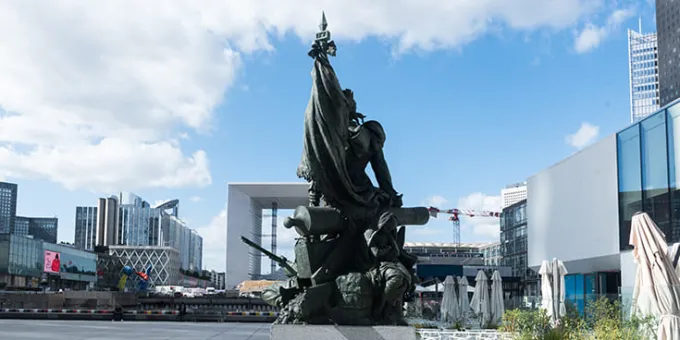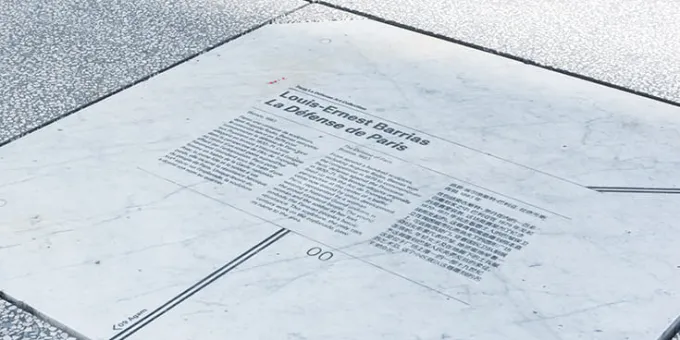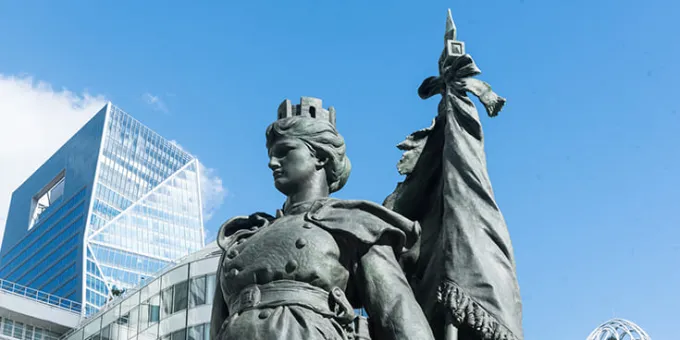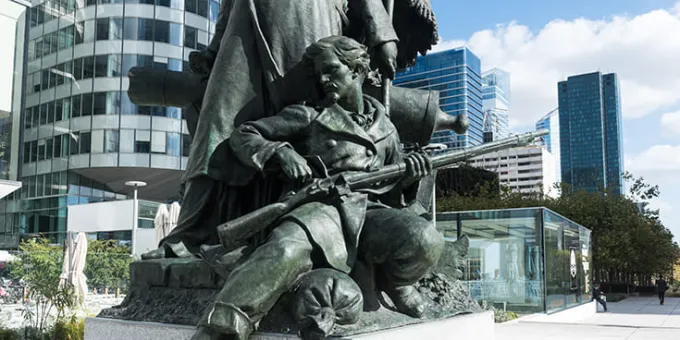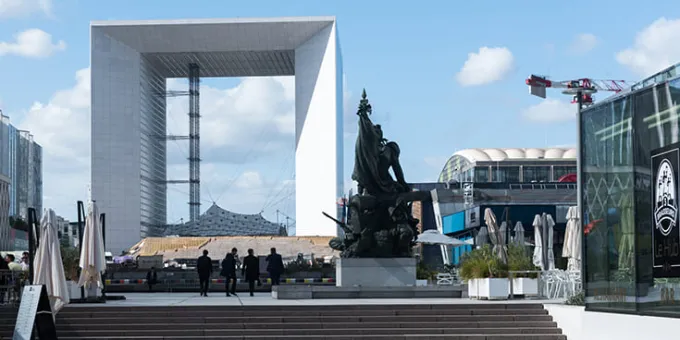La Défense de Paris

La Défense de Paris
Artist: Louis-Ernest Barrias (1841-1905)
Installation date: 1883
Technique: Bronze
Replacing the statue of Napoleon 1st, removed from its pedestal in 1848, this patriotic statue was first erected on October 12, 1883 at the La Défense traffic circle, in front of a crowd estimated at the time at 100,000. It was designed as part of a competition organized by the City of Paris to honor the glory of the soldiers and civilians who had defended the capital during the 1870 war. The business district owes its name to it.
It is a sculpted group, cast in bronze by the foundryman Henri Léon Thiébault, representing the three figures that symbolize La Défense de Paris:
- A woman, dressed in the uniform of the National Guard, leaning on a cannon and holding a flag, represents the allegorical figure of the city of Paris;
- The defenders take the form of a slumped young mobile man placing a final cartridge in his Chassepot rifle. The two figures were looking towards Buzenval, the scene of the last fighting in January 1871;
- A prostrate little girl, whose sad expression and miserable appearance personify the suffering of the civilian population on the other side of the monument.
Barrias is said to have been inspired by Amédée Doublemard's La Défense de la barrière de Clichy ou monument au Maréchal Moncey de la place de Clichy in Paris.
A word about the artist
Born into a family of artists, Louis-Ernest Barrias began painting before turning to sculpture under the guidance of François Geoffroy. At the age of 23, he won the Prix de Rome and was hired on the Paris Opera site. Nourished by formal references to Michelangelo and Bernini, Barrias brilliantly synthesized the neoclassical, romantic and realist movements in numerous works placed in public spaces.
